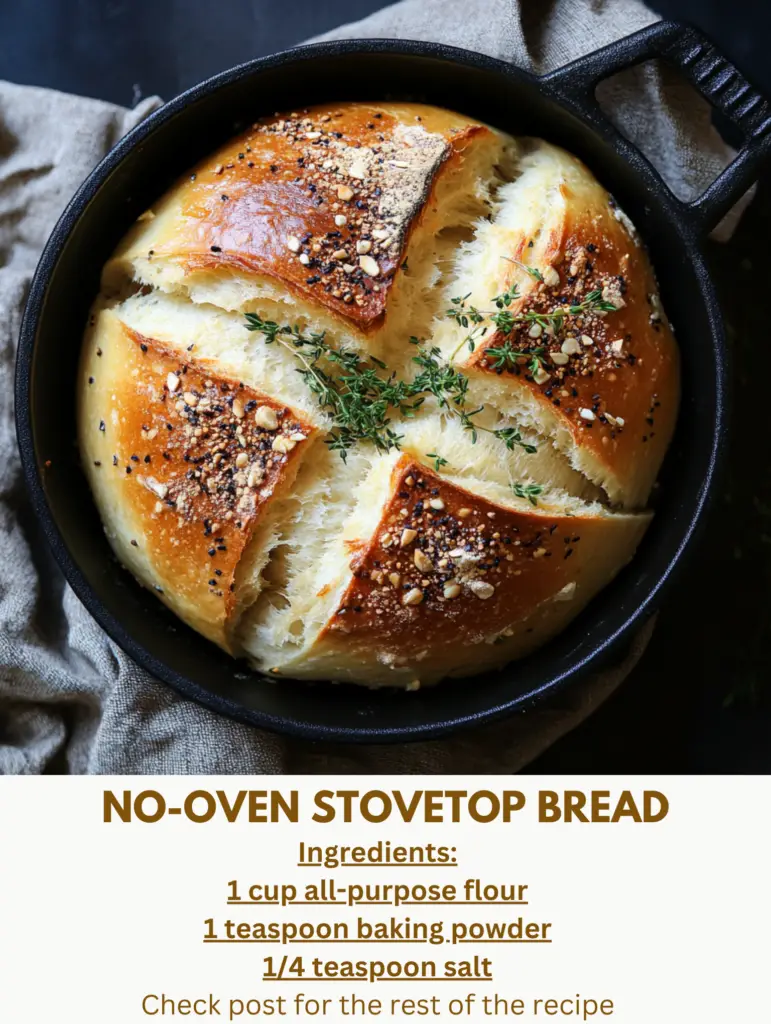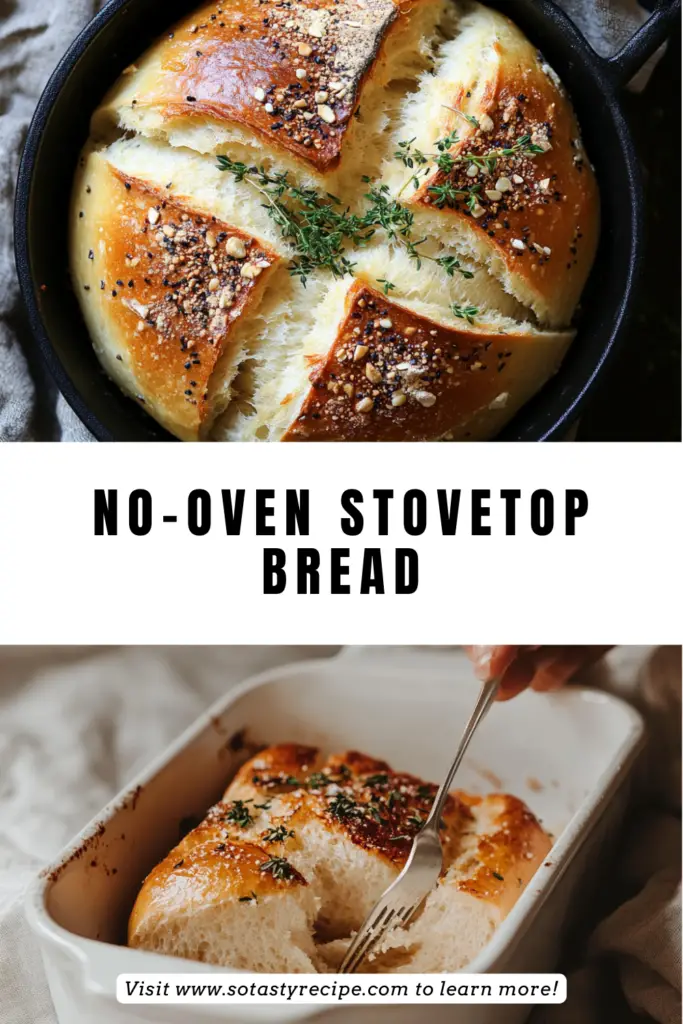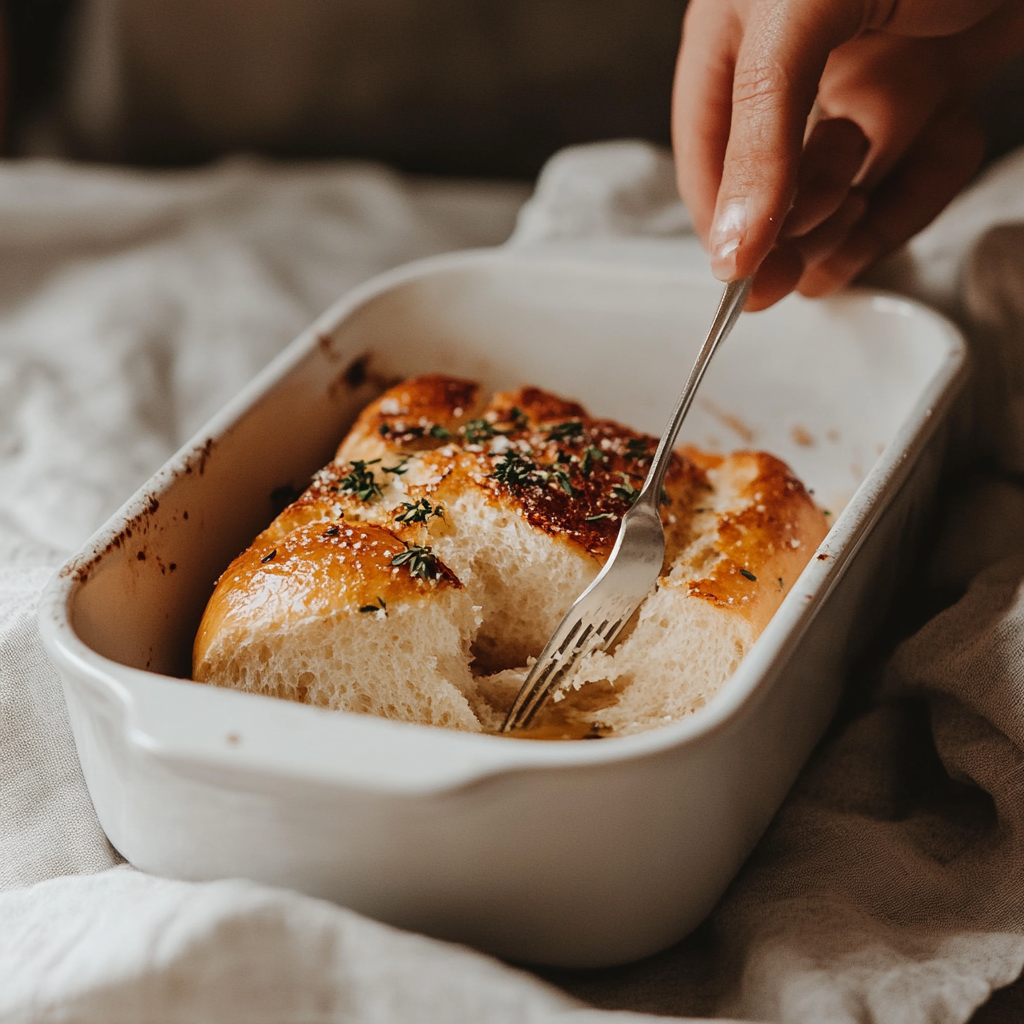A step-by-step guide to making no-oven stovetop bread that is soft, fluffy, and perfect for any occasion.
Introduction
No-oven stovetop bread is a fantastic alternative for those who don’t have access to an oven. This recipe allows you to make delicious, homemade bread using just a pan. It’s easy, convenient, and requires minimal ingredients. Whether you live in a small apartment, travel frequently, or just want to try something new, this method is for you.
Did you know that stovetop bread can be just as soft and flavorful as oven-baked bread? Plus, it saves energy! In this article, you’ll learn the best techniques, ingredients, and tips to achieve bakery-quality bread on your stovetop.
Check out this guide on bread-making science to understand the key elements of baking.

What is No-Oven Stovetop Bread?
No-oven stovetop bread refers to bread baked in a pan on the stove instead of in a traditional oven. The process involves steaming or dry-baking, depending on the type of bread. This technique is widely used in many cultures, from Indian roti to Moroccan khobz.
Origin and History
Baking bread without an oven is an age-old tradition. Before modern ovens, people relied on stone hearths, clay pots, and stovetop cooking to bake bread. Some of the earliest forms of stovetop bread include:
- Flatbreads like tortillas, chapati, and pita.
- Yeasted breads like English muffins and steamed buns.
- Skillet breads such as bannock and soda bread.
Seasonal and Cultural Relevance
Best Season for This Recipe
No-oven stovetop bread is perfect year-round. However, it’s particularly useful in the summer when using an oven can make your kitchen unbearably hot.
Cultural Importance
This bread is widely used in various cuisines:
- In the Middle East, pita bread is often made on a stovetop.
- In India, roti and naan are essential parts of meals.
- In Mexico, tortillas are a staple food.
Key Ingredients
- Flour – All-purpose or whole wheat.
- Yeast – Active dry or instant yeast.
- Sugar – Helps with fermentation.
- Salt – Enhances flavor.
- Water – Helps develop gluten.
- Butter/Oil – For softness and moisture.
Nutritional Breakdown
- Carbs: Provides energy.
- Protein: Essential for muscle repair.
- Fats: Helps maintain healthy skin and cells.
How to Make No-Oven Stovetop Bread
Step-by-Step Guide
- Mix the Dough – Combine flour, yeast, sugar, and salt. Add water and knead until smooth.
- First Rise – Let the dough rest until doubled in size.
- Shape the Dough – Form into balls or desired shape.
- Cook on the Stovetop – Heat a pan and cook with or without oil.
- Flip and Cook Again – Until golden brown and fully baked.
- Cool and Serve – Enjoy warm with butter or jam.
Here’s an in-depth tutorial on kneading dough.
Essential Tools and Techniques
Tools Needed
- Mixing bowl
- Rolling pin (optional)
- Heavy-bottomed pan
- Kitchen towel for covering the dough
Techniques
- Low and slow cooking – Prevents burning.
- Flipping midway – Ensures even cooking.
- Covering the pan – Helps steam the bread.
Variations and Alternatives
- Gluten-free version – Use almond or oat flour.
- Sweet bread – Add honey or cinnamon.
- Herb-infused – Mix in garlic and rosemary.
Pairings and Accompaniments
- Butter & honey – Classic combination.
- Hummus & dips – For a Mediterranean twist.
- Soup & stew – A hearty pairing.
Comparison with Similar Recipes
| Feature | No-Oven Stovetop Bread | Traditional Baked Bread |
|---|---|---|
| Cooking Time | Shorter | Longer |
| Equipment | Minimal | Oven Required |
| Texture | Soft with crusty edges | Evenly crusted |
Health and Wellness Aspects
- Good source of fiber – When made with whole wheat.
- Low in sugar – Unlike commercial breads.
- Heart-friendly – If made with olive oil instead of butter.

FAQs
Is it possible to make bread without an oven?
Yes! Stovetop methods work perfectly.
What is the most important thing in baking bread?
Proper fermentation and kneading ensure good texture.
What happens when bread goes in the oven?
It rises due to heat expansion, similar to stovetop cooking.
What is the secret to making homemade bread?
Using quality ingredients and allowing the dough to rest properly.
Best Time to Enjoy
Great for breakfast with jam, lunchtime sandwiches, or alongside dinner stews.
Evolution of the Recipe
Originally a necessity, no-oven stovetop bread has now become a preferred method due to its ease and energy efficiency.
Future Trends
Expect more eco-friendly, quick, and innovative stovetop bread recipes with alternative flours.
Storage and Leftovers
- Short-term: Store in an airtight container for up to 3 days.
- Long-term: Freeze for up to 3 months.
Presentation Tips
- Serve on a wooden board for rustic appeal.
- Sprinkle with sesame seeds for extra crunch.
Cooking for Special Diets
- Vegan: Use plant-based butter.
- Low-carb: Opt for almond flour.
- High-protein: Add chickpea flour.
Fun Facts
- Some ancient Egyptian breads were made in clay pots over fire.
- The world’s oldest bread dates back over 14,000 years!
Personalization and Storytelling
Have fun experimenting with different flours, spices, and fillings. Share your version in the comments!
Suggested Recipes
For more savory recipes you can also check my friend Alicia’s blog here www.ledstk.com.

